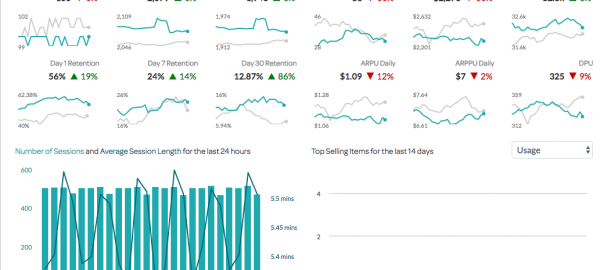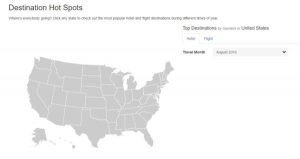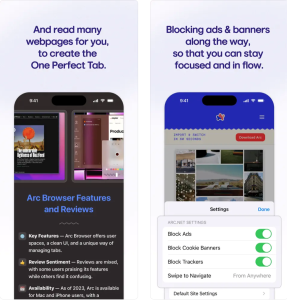It’s a puzzle as old as the hills. With all the many and various features and innovative products your business rolls out – how do you know which ones your customers actually appreciate? And perhaps more importantly, which ones tend to lead those customers on towards long-term loyalty and profit?
And even when we know the answer to that question, what is the best way to promote those features and ensure that users both discover and use them? On the mobile screen in particular, that can be a real challenge.
This post looks at every aspect – or nearly every aspect – of these twin challenges. Get to the end and you’ll have a greater insight into where your mobile business really delivers value, and you’ll be doing a better job of taking your users to that point. Let’s start by looking at identifying the features that matter.
What Do Users Care About?
Perhaps it might help to start with a few home truths when it comes to this particular subject. Or one in particular. You don’t know what your customers actually care about. There is perhaps no area so rife with potential for a mismatch between the perceptions of customers and the business itself. The features and widgets that product teams spend months and perhaps years lovingly crafting are often meant with almost total indifference. And on the other side of the equation, throwaway features that are little more than a second thought for development teams become firm favorites with the customer base.
It has always been this way, both in the mobile era and in the prehistoric times that preceded the emergence of the smartphone. And with that being the case, when it comes to establishing which features matter you have no better approach than taking a look at real user data. That approach enables businesses to at least have some idea about what actually counts out in the field.
Fortunately enough, it is also easy to do. Any half-decent analytics package should enable this to be done. If your current analytic or mobile marketing platform doesn’t help – talk to us! The first step is to develop some benchmark figures for retention, engagement and revenue per user. In Swrve, these numbers are shown in the dashboard as shown here, but it is also possible to drill down into the data and show how these change over time or indeed according to acquisition cohorts – so you can be sure you are comparing like with like in terms of new users joining the app.

Once those baselines are reasonably well understood, the next step is to establish a list of features we believe may have an impact on the future retention and profitability of our customer base. To some extent this is a matter of educated guesswork, but do take care not to exclude features or areas of the app experience that are not considered ‘important’: remember that the view from inside the business isn’t always entirely accurate!
When that list is in place, it is possible to create segments based on those users who have used or experienced that particular feature, and those who have not. These segments can then be compared against medium and long-term metrics relating to mobile success, such as engagement, retention and revenue. If they’re beating the baseline – as shown below – you’ve got a feature you want people to know about!

A Warning
So far so simple. But before we go further a brief warning. Almost by definition, any set of users who have used a feature, when compared with a set of users who have not, are almost certainly more engaged in general. That means the potential for false positives in this area is high. The good news is you can minimize that risk in two simple steps:
Do your best to ensure that the two groups are as equivalent as possible when it comes to total engagement (time spent in app, typical session length etc). This will reduce the chances of simply using feature discovery to identify greater engagement that was already there.
Compare and assess multiple features to identify those that lead to the largest uplifts. You should be doing this anyway, of course, but by isolating the most effective features when it comes to uplift, you are more likely to avoid issues around correlation / causation with engagement.
Telling Users About The Features That Count
So we’ve discovered which features have the greatest impact on the engagement levels and value of users down the line. The next step, of course, is to ensure that we make every effort to ensure users discover those features and use them. Sounds simple. And really, it is simple. There is a relatively straightforward three step process. Follow these steps and you’ll find users flocking to your killer features in droves!
1. Promote The Feature During Onboarding
Clearly it isn’t possible or desirable to do this for every significant feature in your title. However, for those that really count, there’s no better option than taking some time during those all important first five minutes to ensure all your users are aware of it. Onboarding screens, as shown, give you the opportunity to do just that. Even after this initial experience, there are still opportunities to remind users about the features you want them to discover. Tip overlays, for example, can be used to point out features at a contextually relevant moment when the user can (and is more likely to) take immediate action.

2. Do It Over Time
Feature discovery should continue over time. And one of the great merits of waiting a while is that it enables improved targeting. Specifically, we can display campaigns only to users who have failed to find a specific feature up to this point in time – and avoid annoying those who have. If a feature is particularly important, do continue to show in-app messages, tip overlays – and even push notifications – in order to steer users in the right direction.
3. Test What Works Best For You
However you decide to promote your key features, it is essential to A/B test different approaches. This doesn’t only apply to the content and creative within in-app campaigns. It also has relevance for the UI and interaction design of the app itself. You will find that some navigation and menu options are more effective when it comes to feature discovery – and A/B testing is the ideal way to show these alternative designs to controlled user groups in order to establish precisely what works and what doesn’t.
Business & Finance Articles on Business 2 Community(52)








